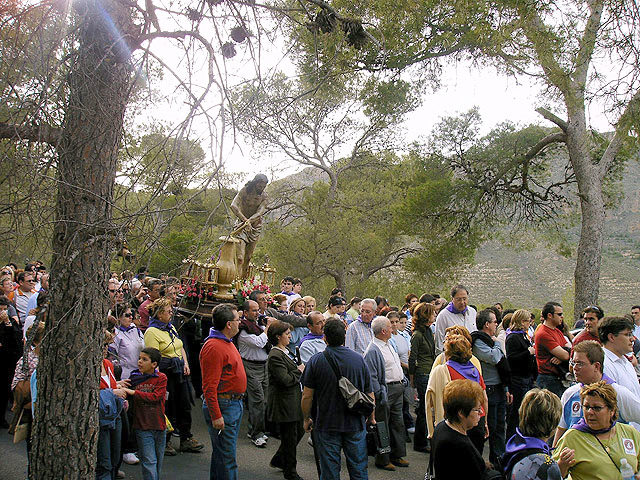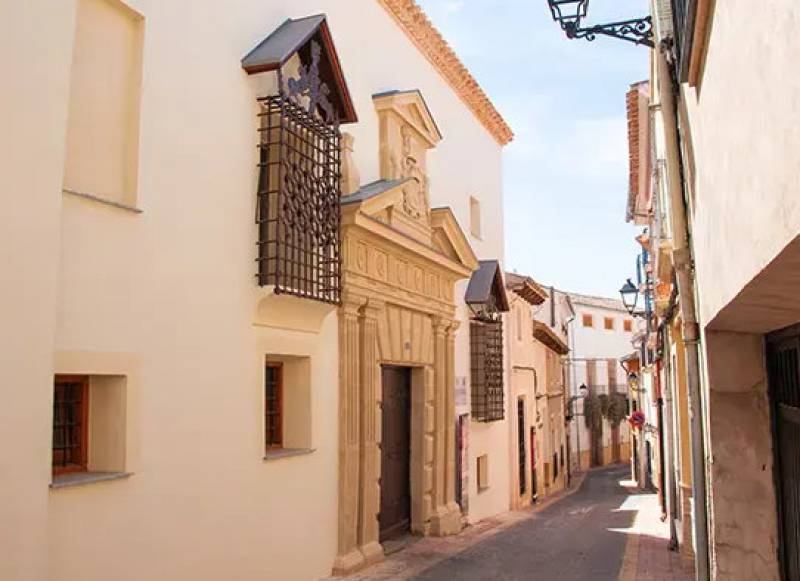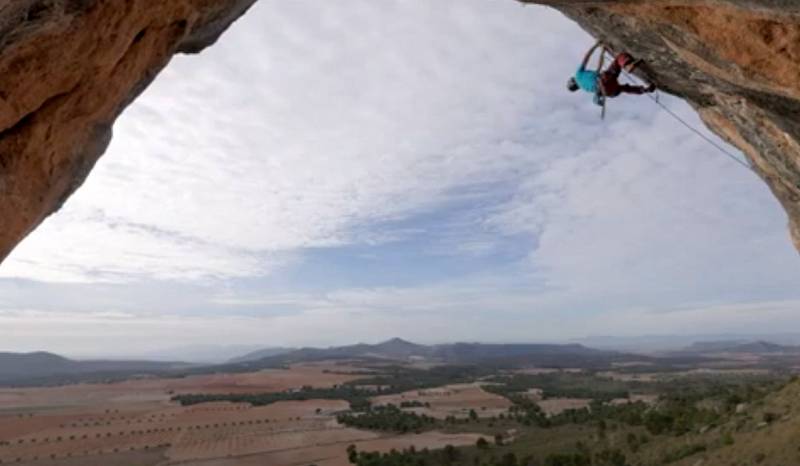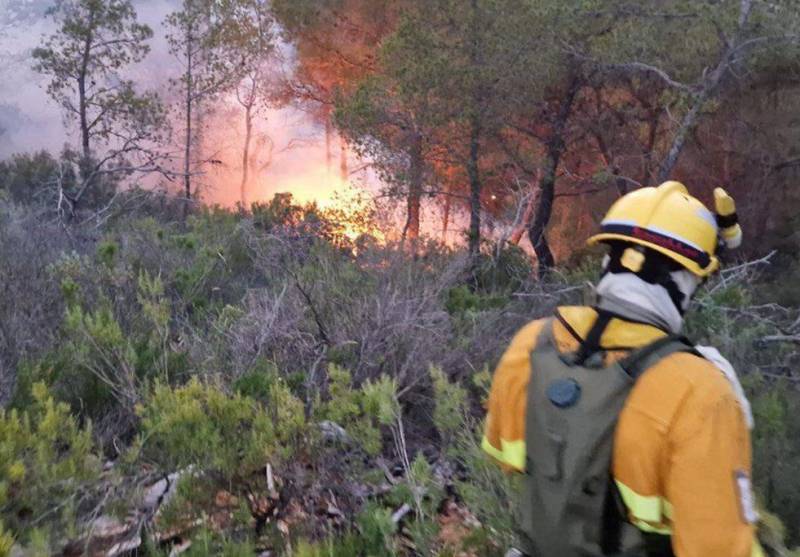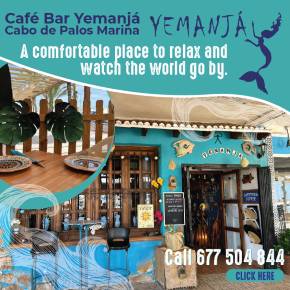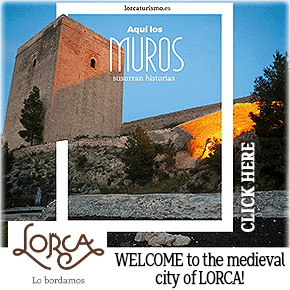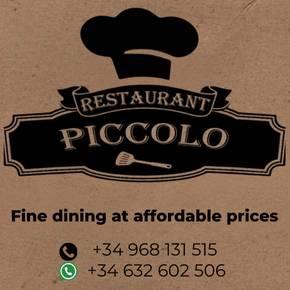-
CABALGATA JUMILLACLICK HERE!
-



 Welcome To
Welcome To Jumilla
Jumilla
- Region
- Águilas
- Alhama de Murcia
- Jumilla
- Lorca
- Los Alcázares
- Mazarrón
- San Javier
-
ALL AREAS & TOWNS
- AREAS
- SOUTH WEST
- MAR MENOR
- MURCIA CITY & CENTRAL
- NORTH & NORTH WEST
- TOWNS
- Abanilla
- Abarán
- Aguilas
- Alamillo
- Alcantarilla
- Aledo
- Alhama de Murcia
- Archena
- Balsicas
- Blanca
- Bolnuevo
- Bullas
- Cañadas del Romero
- Cabo de Palos
- Calasparra
- Camping Bolnuevo
- Campo De Ricote
- Camposol
- Canada De La Lena
- Caravaca de la Cruz
- Cartagena
- Cehegin
- Ceuti
- Cieza
- Condado de Alhama
- Corvera
- Costa Cálida
- Cuevas De Almanzora
- Cuevas de Reyllo
- El Carmoli
- El Mojon
- El Molino (Puerto Lumbreras)
- El Pareton / Cantareros
- El Raso
- El Valle Golf Resort
- Fortuna
- Fuente Alamo
- Hacienda del Alamo Golf Resort
- Hacienda Riquelme Golf Resort
- Isla Plana
- Islas Menores & Mar de Cristal
- Jumilla
- La Azohia
- La Charca
- La Manga Club
- La Manga del Mar Menor
- La Pinilla
- La Puebla
- La Torre
- La Torre Golf Resort
- La Unión
- Las Palas
- Las Ramblas
- Las Ramblas Golf
- Las Torres de Cotillas
- Leiva
- Librilla
- Lo Pagan
- Lo Santiago
- Lorca
- Lorquí
- Los Alcázares
- Los Balcones
- Los Belones
- Los Canovas
- Los Nietos
- Los Perez (Tallante)
- Los Urrutias
- Los Ventorrillos
- Mar De Cristal
- Mar Menor
- Mar Menor Golf Resort
- Mazarrón
- Mazarrón Country Club
- Molina de Segura
- Moratalla
- Mula
- Murcia City
- Murcia Property
- Pareton
- Peraleja Golf Resort
- Perin
- Pilar de la Horadada
- Pinar de Campoverde
- Pinoso
- Playa Honda
- Playa Honda / Playa Paraíso
- Pliego
- Portmán
- Pozo Estrecho
- Puerto de Mazarrón
- Puerto Lumbreras
- Puntas De Calnegre
- Region of Murcia
- Ricote
- Roda Golf Resort
- Roldan
- Roldan and Lo Ferro
- San Javier
- San Pedro del Pinatar
- Santiago de la Ribera
- Sierra Espuña
- Sucina
- Tallante
- Terrazas de la Torre Golf Resort
- Torre Pacheco
- Totana
- What's On Weekly Bulletin
- Yecla


- EDITIONS:
 Spanish News Today
Spanish News Today
 Alicante Today
Alicante Today
 Andalucia Today
Andalucia Today
article_detailThe castle of Jumilla
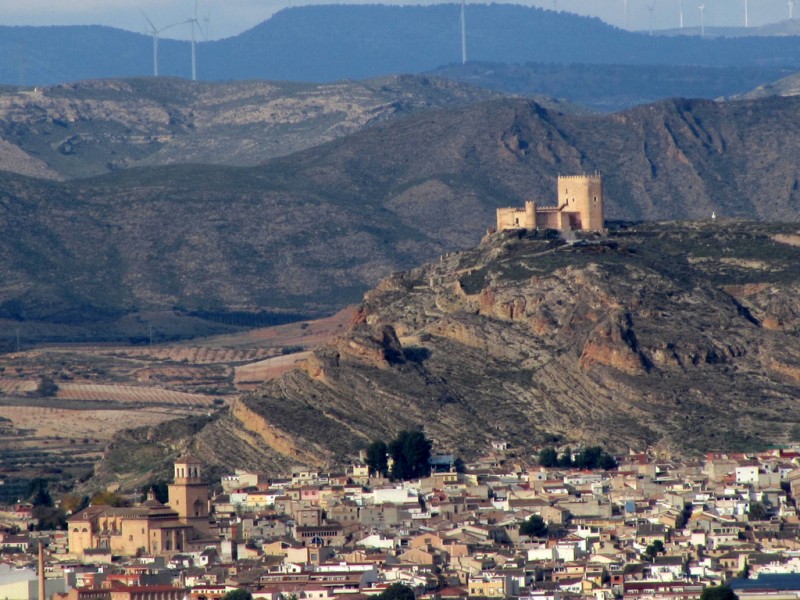
The castle of Jumilla is renovated to its original condition when it was built in 1461
Despite having undergone extensive renovation in recent years the castle of Jumilla is, in many ways, everything one might expect of a medieval fortress: it stands in a position of dominance high on a hilltop above the town, it commands panoramic views over the surrounding area, it has an imposing keep four floors high with crenelated battlements and it generally gives the impression of being close to impregnable.
These attributes were those foremost in the mind of Juan Pacheco, the first Marquis of Villena, when he ordered the castle to be built in 1461 to defend the town and the surrounding countryside, of which he had been put in charge 16 years previously. However, at least in choosing the location, the Marquis had his task made easier by the fact that previous fortresses had stood in the same spot for many centuries.
Before the castle
The first known fortifications on the hill date from the Bronze Age (between 2000 and 1000 BC), and as they grew they became a large fortified settlement by the dawn of the subsequent Iron Age. These structures were taken over and adapted in around 190 BC by the Romans, a part of whose defensive wall still remains, but once they left the Iberian Peninsula the fortifications fell into ruin in the sixth and seventh centuries AD.
However, in the year 713 the Moors entered Jumilla as they swept across southern Spain, and began to build their own fortress on top of the Roman remains. Their castle survived until the Reconquista by Christian forces in the mid-13th century, after which King Alfonso X “el Sabio” presented the town of Jumilla with an image of the Virgen de Gracia and a small church was built next to the fortress in her honour on the remains of an Arab mosque. The remains of this church can still be seen.
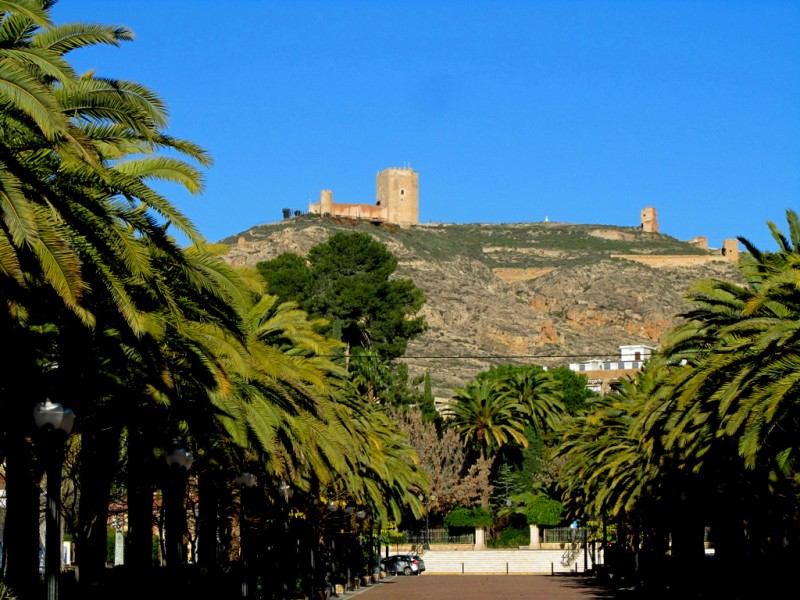
The Marquis of Villena and the history of the castle
But it was not until 1445 that the town was placed in the hands of the Marquis de Villena, and it was he who ordered that the castle be rebuilt in almost exactly the form we can see today. Fortunately for the Marquis, the fortifications were soon redundant as the threat of Moorish uprisings receded, and it was not until later centuries that the building was put to any meaningful military use.
During the Wars of the Spanish Succession it was at the castle of Jumilla that Cardinal Belluga gathered his troops to fight for the cause of the House of Borbon in the Battle of Almansa (1707), and when Felipe de Borbón eventually triumphed it was this loyalty to his cause which led to Jumilla receiving royal favour over the following years.
During the War of Independence the castle was used as a barracks by the French troops, who adapted it somewhat, and in the first half of the 19th century it became a prison. Following this, though, its condition declined and eventually the castle was abandoned.
However, in 1971, towards the end of Franco’s dictatorship, work began to restore the building, and this was followed in 1990 by an archaeological dig in the cemetery and church of Nuestra Señora de la Gracia. The latest episode of restoration and refurbishment was completed in 2000, and every effort has been made to ensure that visits are enjoyable and informative.
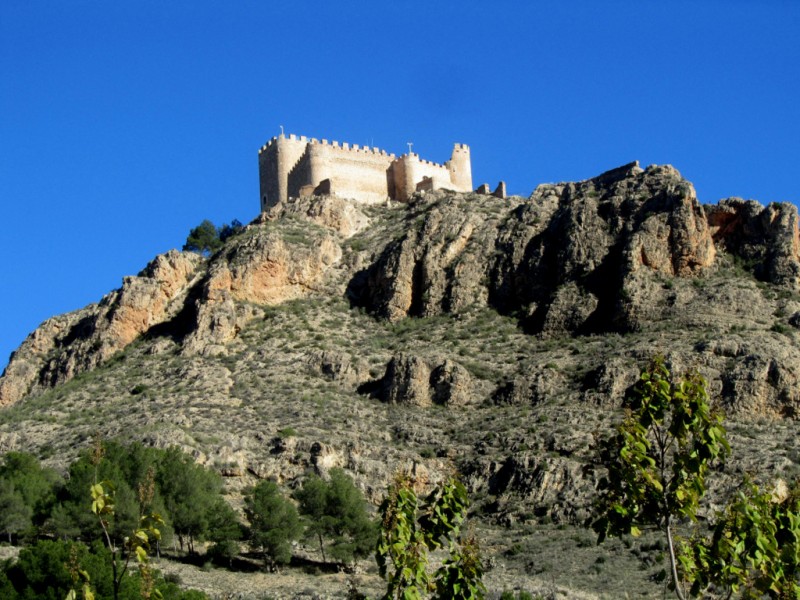
Inside the castle
Originally, the lower of the floors in the keep contained the dungeons and the storage areas for food and water, along with a 21,800-litre cistern in which rainwater was collected. Alongside is the inner ward, complete with two cisterns which date from the time of the Moors, and a wooden chemin de ronde.
The keep itself is irregularly shaped: there are no windows on the eastern side, which is rounded in order to minimize the effect of cannonball attacks, and inside there was a weapons store on the first floor (which was destroyed by the French troops during the War of Independence), the noble living quarters on the second floor (including a large hearth and fireplace) and the mechanisms for operating the drawbridge on the third floor. The rooftop battlements include space for three cannon and four apertures through which they could be fired.
Among the stops on a tour of the castle are the Moorish cisterns, which could store up to 96,500 litres of water and included side windows through which water could be taken out by means of pulleys. These water tanks were vital for the castle’s ability to withstand a long siege, and elsewhere in the fortress there are other installations such as ovens and grain stores which served the same purpose.
Also worth a visit is the Torre de Maestre, the smaller, secondary tower on which the coat of arms of Diego López Pacheco are emblazoned.
How to visit the castle
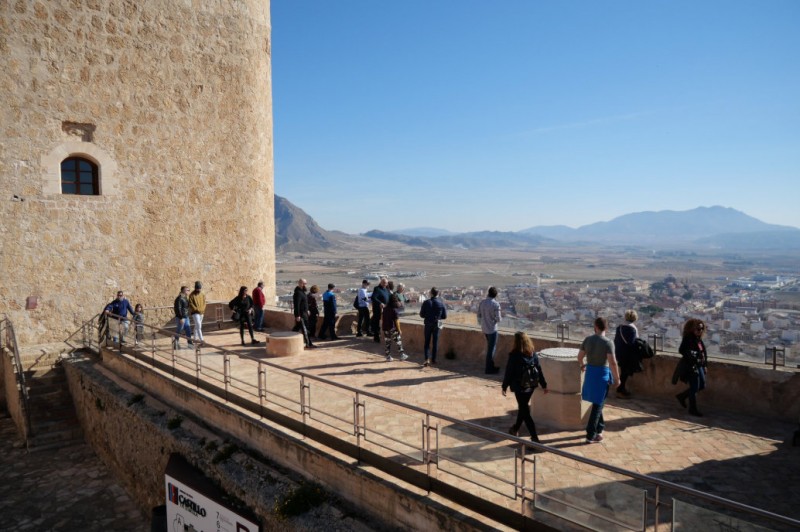
Access to the castle is by the “Camino del Subidor”, a restored path which was originally built by the Moors to provide access to the western side of the fortress. It joined the “hisn” (or fortified citadel) with the “medina” and “al-qasaba” at the top of the hill and the “arrabal” or lower districts, and now links Jumilla to its castle.
However, this path is not open to motor vehicles, and visitors are required to walk or cycle their way up.
Opening times vary during the year:
October to February: Saturdays, Sundays and public holidays 10.00 to 14.00.
March, April and September: Saturdays 10.00 to 14.00 and 17.00 to 19.00, Sundays and public holidays 10.00 to 14.00.
May to August: Saturdays 10.00 to 14.00 and 19.00 to 21.00, Sundays and public holidays 10.00 to 14.00.
Closed on 1st and 6th January, Good Friday, Easter Sunday, 1st May and Christmas Day.
A token entry fee of 1€ is charged.
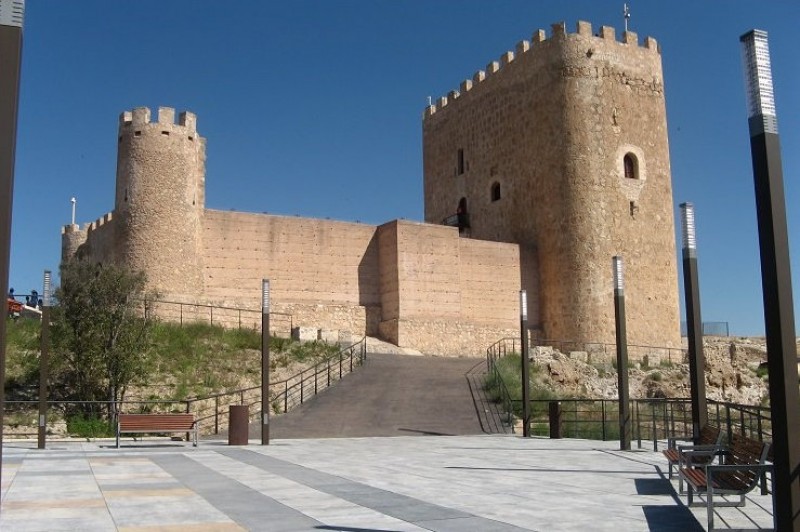
When the castle is open there is a bus service in operation from the gate on the road to the castle, taking passengers up to the fortress at 10.30, 11.35, 12.30 and 13.30. Return journeys set out at 11.00, 12.00, 13.00 and 14.00.
In addition, another bus leaves the tourist office at 11.30 and returns at 13.00.
For more information about visiting Jumilla, including what's on, local news and all of the bodegas on the Jumilla wine route, visit the home page of Jumilla Today.
article_detail
Contact Murcia Today: Editorial 000 000 000 / Office 000 000 000












